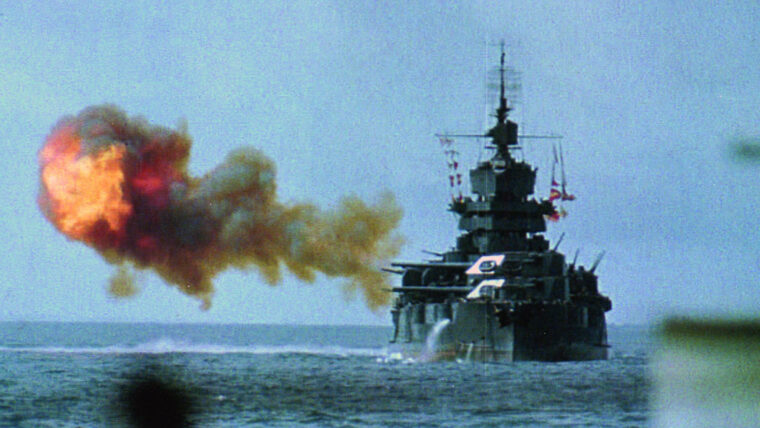
January 2008
WWII History
Lifting the Japanese Military
By John W. WhitmanJapanese military successes in 1941 and 1942 shocked the West. Behind those successes lay a logistics effort not often appreciated, that of shipping. Read more


Volume 7, No. 1
Cover: A German soldier guards a Junkers Ju-87 Stuka dive-bomber. Three bombs lie on the grass in front of the plane. © CORBIS

January 2008
WWII History
Japanese military successes in 1941 and 1942 shocked the West. Behind those successes lay a logistics effort not often appreciated, that of shipping. Read more

January 2008
WWII History
Sixty-five years ago, Reichsmarschall Hermann Göring’s Luftwaffe showcased its aerial triumphs in a 1942 commemorative book of photographs entitled Fliegen und Siegen (“Flying and Victory”). Read more

January 2008
WWII History
By the spring of 1943, the Nazi deaths camps in eastern Poland—Sobibor, Belzac, and Treblinka—were running out of victims. Read more

January 2008
WWII History
As the Japanese delegation stood on the deck of the battleship USS Missouri on September 2, 1945, preparing to sign the documents that ended World War II, a large formation of Boeing B-29 Superfortress heavy bombers swooped low over Tokyo Bay as a reminder of the terrible destruction that had befallen their nation and turned Japan’s cities into ruins. Read more

January 2008
WWII History
Boarding a train at the famous station built by the French as a terminus on the line from Djibouti, the Conquering Lion of the Tribe of Judah, Elect of God, Ras Tafari, Emperor Haile Selassie of Abyssinia left his capital Addis Ababa on May 2, 1936. Read more

January 2008
WWII History, Profiles
American soldiers of Japanese ancestry made remarkable contributions to the Allied victory during World War II. Read more

January 2008
WWII History
On a cold, dark December morning in 1944, B Company, 1st Battalion, 15th Regiment began the slow ascent up Hill 351. Read more
January 2008
WWII History, Editorial
Thousands of military personnel killed in action during World War II rest in unmarked graves, high on mountaintops, beneath the ocean amid the wreckage of sunken ships, in remote jungles and arid deserts. Read more

January 2008
WWII History, Dispatches
Dear Editor:
I read with interest George Tipton Wilson’s article “Red Air Force Heroines” in the September issue of WWII History. Read more

January 2008
WWII History, Profile
Some accounts of Ian Fleming’s life make it seem that only at the age of 44, as an antidote to the shock of finally agreeing to get married, did he suddenly commit himself to the unplanned task of creating his James Bond novels. Read more

January 2008
WWII History, Ordnance
Through the first half of World War II, Allied shipping losses to German U-boats climbed steadily from over 400,000 tons in the last four months of 1939 to more than two million tons each in 1940 and 1941, before reaching a staggering 6,266,215 tons in 1942 following the entry of the United States into the war. Read more

January 2008
WWII History, Insight
General George S. Patton, Jr., was one of the most flamboyant and controversial figures of World War II. Read more

January 2008
WWII History, Top Secret
As he read the decrypt of the radiogram from Admiral Harold Stark, Chief of Naval Operations, several things bothered Admiral Thomas C. Read more

January 2008
WWII History, Books
Operation Iceberg, the battle of Okinawa, which lasted from April to June 1945, was the final and largest air-sea-land battle of the Pacific campaign. Read more

January 2008
WWII History, Simulation Gaming
The Soviet counterintelligence agency known as SMERSH is so famous for its role in Ian Flemming’s James Bond novels, that its real, historical role is comparatively unknown. Read more